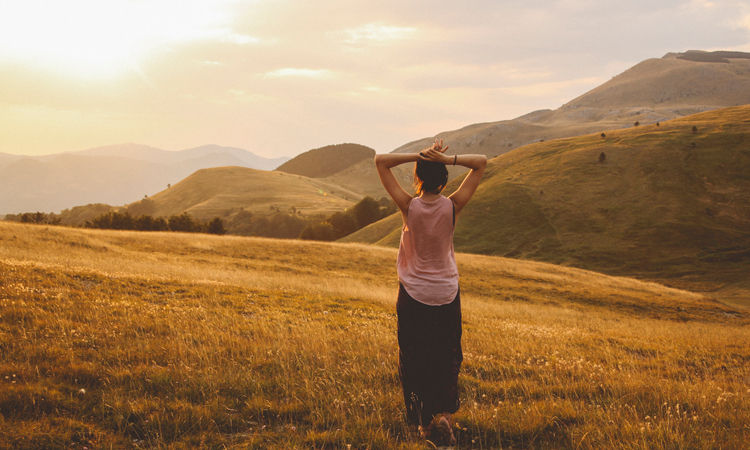Noise pollution is linked to health problems and some argue it interferes with our natural connection to the earth. As the world’s quiet places disappear, are we forgetting how to listen?
In 1989, “acoustic ecologist” Gordon Hempton received a grant to document and record the natural sounds of Washington state. He identified 21 wilderness places to record—sites unsullied by the sounds of traffic, aviation, construction, and other man-made noise. Twenty-five years later, only three of those sites remain muted.
Little by little, our world is becoming louder, with the creeping spread of noise pollution infiltrating our homes, our workplaces, and even our wilderness. Hempton, whose work for the past 30 years has been traveling the world to survey and record natural sound, says he’s seen firsthand how the hum, ping, and roar of modern life has taken over our soundscape. By his count, the United States has only 12 remaining truly “quiet places,” which he defines as somewhere you can go for at least 15 minutes without hearing artificial sound at dawn, the hour when sound travels farthest.
“That dawn period is a really important time, because it’s when wildlife can vocalize and send their message the greatest distance with the least energy,” he says. “It’s a beautiful time to listen.”
With his nonprofit organization, the One Square Inch of Silence Foundation, Hempton is seeking to designate a “silence sanctuary” within the Hoh Rain Forest at Olympic National Park. While preserves have been created to protect rivers, forests, and even the darkness of the night sky, he notes, “There is not one place on planet Earth set off-limits to noise pollution.”
While exposure to high noise levels has long been a known cause of hearing loss in humans, recent studies have also linked noise pollution to conditions like heart disease, hypertension, and stroke.
Researchers are also studying the impact of industrial and urban noise on the natural environment. A 2009 study in the journal Current Biology found that noise pollution reduces biodiversity by increasing the population of urban-adapted birds and driving out more noise-shy species. A study published in the journal Animal Behaviour in 2007 found that excessive noise disrupted the pair bonds of zebra finches, perhaps by drowning out the birds’ mating calls. Numerous studies have also pointed to the negative effects of underwater noise pollution, including a 2013 study published in Ethnobiology and Conservation that found that noise from motorboats was disrupting the communication of estuarine dolphins in Brazil.
Hempton calls noise pollution “the canary in the coal mine,” noting that the sounds that impact our acoustic environment—the rush of freeway traffic or the roar of a jet passing overhead—are closely tied with our consumption of fossil fuels.
“The other way of looking at it,” he adds, “is that the places that are quiet today are also the healthiest places, the least impacted.”
But harder to quantify than its impact on health and the environment is the effect that noise pollution has on our spirit and sense of self. All living beings are hard-wired for sound, Hempton argues, noting that while some dark-dwelling creatures may have evolved without sight, there are no known vertebrate species that are unable to perceive sound vibrations.
Early human beings learned to survive by listening—and by constantly scanning their environment for an awareness of all sounds. But the modern world has become so full of white noise, so polluted by meaningless sound, that “literally people have changed the way they listen.”
Instead of keeping our ears open to everything, we rely on our past experiences to tune out the drone of a leaf-blower or the clatter of a passing streetcar, and to zero in on the squeal of tires approaching a crosswalk.
“We listen for what’s important,” he says. “We filter out what’s unimportant before we’ve even heard it and don’t make ourselves available to new information that might be meaningful.”
Outside of urban areas, air traffic is the biggest threat to natural quiet. Federal Aviation Administration regulations don’t restrict flight patterns over wilderness areas, and with air traffic increasing, the problem will only get worse.
“It pretty much spells the extinction of natural quiet here in the U.S., unless we set places aside,” Hempton says.
So without quiet places, is plugging in to a recorded album of nature sounds our only recourse? Hempton says real change will start when we pull out the ear buds and become aware of the sounds around us.
“I ask people, ‘Don’t ignore noise pollution; become a true listener,’” he says. “Pay attention to the noise, and if it bothers you, let it bother you—don’t ignore it.”
What you can do
If You Have a Minute
Write to your senators and ask them to preserve the natural soundscape by supporting legislation to restrict air traffic over wilderness areas. Find their email addresses at senate.gov.
If You Have an Hour
Visit the Noise Pollution Clearinghouse at nonoise.org/quietnet.htm to find an anti-noise organization near you and volunteer for projects to reduce man-made sound in your area.
If You Have a Month
Spend time exploring wilderness areas near your home in search of quiet places. If you find a site where you can spend 15 minutes without hearing man-made noise, especially in the early morning hours, contact the One Square Inch of Silence Foundation at info@onesquareinch.org and add it to the list of sites to investigate for preservation.
If You Have $100
Support the efforts of the One Square Inch of Silence Foundation topreserve what’s believed to be the quietest place in the United States, in the Hoh Rain Forest at Olympic National Park. onesquareinch.org
“The Extinction of Quiet” by Ilima Loomis was originally published on Spirituality & Health.



